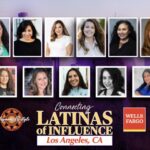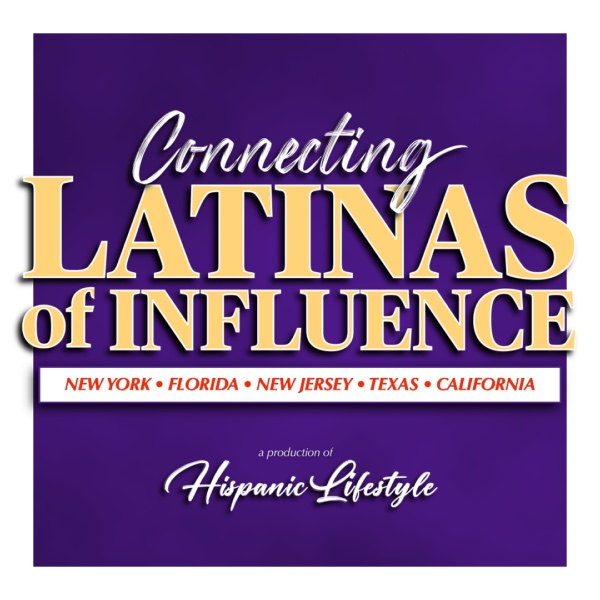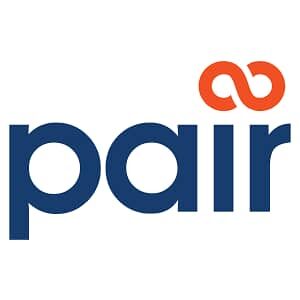
Art Along the Hyphen: The Mexican-American Generation
Rarely Seen Art From Six Extraordinary
Los Angeles Artists From 1945 to 1965.
The Exhibit is part of the unprecedented collaboration initiated by the Getty and the UCLA Chicano Studies Research Center’s L.A. Xicano. On view: October 14, 2011–January 8, 2012
 The Autry National Center, in partnership with the UCLA Chicano Studies Research Center (CSRC), is proud to present a collection of works by a virtually unknown generation of Mexican American artists whose rarely seen works will be exhibited to the public in Art Along the Hyphen: The Mexican-American Generation, opening October 14, 2011.
The Autry National Center, in partnership with the UCLA Chicano Studies Research Center (CSRC), is proud to present a collection of works by a virtually unknown generation of Mexican American artists whose rarely seen works will be exhibited to the public in Art Along the Hyphen: The Mexican-American Generation, opening October 14, 2011.
This exhibition is part of a collaboration with CSRC called L.A. Xicano, which examines crucial dimensions of this history through four interrelated exhibitions at the Autry, the Fowler Museum at UCLA, and the Los Angeles County Museum of Art. L.A. Xicano is curated by Chon A. Noriega, Terezita Romo, and Pilar Tompkins Rivas. Romo is the lead curator for Art Along the Hyphen: The Mexican-American Generation. The exhibition is also part of Pacific Standard Time. This unprecedented collaboration, initiated by the Getty, brings together more than sixty cultural institutions from across Southern California for six months, beginning in October 2011, to tell the story of the birth of the L.A. art scene. Pacific Standard Time is an initiative of the Getty. The presenting sponsor is Bank of America.
“The history of art in Southern California is incomplete without a full consideration of the contributions made by Mexican American and Chicano artists,” said Daniel Finley, Autry President and CEO. “Therefore, the Autry is proud to present this exhibition that brings to light the works of these extraordinary Mexican American artists thanks to our collaboration with the UCLA Chicano Studies Research Center (CSRC) and the Getty initiative, Pacific Standard Time.”
Between 1945 and 1965, Mexican American artists contributed to the emerging California iconography and its connections to the national imagery, whether as part of the American West, Spanish California, or Hollywood. Documenting an overlooked yet significant tributary within the emergence of modern art in Los Angeles, the exhibition combines the work of Hernando Villa (1881–1952), Alberto Valdés (1918–1998), Domingo Ulloa (1919–1997), Roberto Chavez (born 1932), Dora De Larios (born 1933), and Eduardo Carrillo (1937–1997) to explore each artist’s dialogue with various art movements of the twentieth century as refracted through cultural heritage, artistic influences, and social commentary. The exhibition also documents the fluid transition by some artists into the Chicano art movement activism of the 1970s.
“Art Along the Hyphen opens up an entirely new vein of American artistic production, one that was in intimate dialogue with the major styles and issues of its time period,” says L.A. Xicano organizer and CSRC Director Chon Noriega. “But it is also one that introduced a new aesthetic approach grounded in dynamic space between two national cultures.”
Prior to the Chicano civil rights movement, which began in 1965 and brought national visibility to the community, artists of Mexican descent such as Villa forged paths that followed traditional artistic trajectories, yet countered stylistic conventions with their “bicultural aesthetic synthesis.” The majority of these Mexican American artists have, however, been neglected by the mainstream art canon, ignored by art institutions, and absent from the art school curricula.
Against the backdrop of post-WWII social and political change in Los Angeles, from the Zoot suit riots to “white flight” and freeway construction, Mexican American artists created work that responded to aesthetic developments in New York as well as artistic and cultural influences from their Mexican heritage. This marks the beginning of a synthesis that would define them as artists and provide a foundation for the emergent Chicano art movement of the late 1960s. The careers of Carrillo, Chavez, De Larios, Ulloa, Valdés, and Villa constitute individual stories of struggle and achievement, and together illustrate the multiplicity of aesthetic responses present within the Mexican American community.
Hernando Villa (1881–1952)
Villa was a successful illustrator and art instructor who specialized in rail travel and worked for various publications including Pacific Outlook, Town Talk, West Coast Magazine, and Westways. Consistent with popular expectations of commercial tourist imagery, Native Americans constituted a major iconographic source for Villa’s art. Villa taught at the Los Angeles School of Art and Design, and painted a number of L.A. murals including one for Tally’s New Broadway Theater in Los Angeles in 1916; one on the dome of the New Rialto Theatre in Phoenix, Arizona, in 1921; and a multipaneled mural, The Pioneers, at Citizens Trust and Savings Band in Los Angeles in 1926. It was Villa’s creation of the iconic emblem “The Chief” for the Santa Fe Railway that brought him national recognition that lasted over four decades.
Alberto Valdés (1918–1998)
Valdés was a commercial artist specializing in magazine advertisements, outdoor billboards, and orange crate labels. His career was interrupted by his service in the Army during World War II. On his return, he found a position at MGM Studios as an art designer until he retired in his forties. The end of Valdés’s commercial career marked the beginning of his artistic productivity, which would span four decades and encompass a wide range of styles, from pure abstraction to enigmatic forms. A consummate experimenter, Valdés worked in series, painting several paintings at the same time until he was ready to move on to another artistic style or genre. Evocative of pre-Columbian stone effigies, Valdés’s work is often both stately and menacing, and is replete with artistic expression in the gradual shifts of hues, the subtle handling of interlocking forms to shape the figure, and the play of light that accentuates its mysterious, otherworldly qualities.
Domingo Ulloa (1919–1997)
Before the civil rights movement in the 1960s, there were artists committed to promoting social justice through their artwork. One of the most accomplished yet under-recognized social realists during the 1940s and ’50s was Domingo Ulloa. Using the G.I. Bill to take classes at the Jepson Art Institute, he studied with prominent expressionist Italian painter Rico Lebrun. Both felt a moral commitment to depict the horrors of war and created art that was both courageous and outside the dominant stylistic realm of abstraction. Ulloa developed deep respect for the figure, acute observation skills, and the technical abilities of a superb draughtsman. This combination of academic training and political instructors generated a singular aesthetic that is evident in works such as Painters on Strike (1948), Racism/Incident at Little Rock (1957), and his iconic work, Braceros (1960). In 1993, the California State Assembly proclaimed Ulloa the “Father of Chicano Art.”
Dora De Larios (born 1933)
De Larios decided to become an artist after a trip to Mexico City where she was exposed to the ceramic art of the Maya, Aztec, and West Mexico civilizations. When De Larios enrolled in USC, she was the only Mexican student studying with foremost clay artists and instructors. Influenced by the Bauhaus movement and Japanese pottery, her first exhibition in San Francisco’s Gump’s Gallery sold out. As a professor at USC and UCLA, she maintained her dedication and passion for exploring cultural styles as evident in her haniwa and pre-Columbian–influenced Queen and King sculptures. In 1977, De Larios created a cobalt-blue glaze-over-porcelain dinnerware set for the White House which was then displayed at the Smithsonian. In 1963, De Larios was invited by Millard Sheets to create new designs for tile manufacturer Interpace, and in 1966, she was commissioned by Walt Disney at Disneyworld in Orlando, Florida. When creating public art, De Larios ensured that each commission was integrated as an organic component of the overall plan.
Roberto Chavez (born 1932)
Roberto Chavez was born to parents who came to Los Angeles after the Mexican Revolution. Chavez showed an early fascination with drawing, mainly cartoons and caricatures. He also loved to create sculptures from metal scraps, recycling materials into toys. He enrolled in Los Angeles City College’s commercial art program and transferred to UCLA following military service. Painted in 1957, Masks shows how Chavez synthesized his love of the figure with his appreciation of abstract art and reflects his preference for a loose, playful painting style over realistic portrayal. He later taught at East Los Angeles College (ELAC) and UCLA where he reconnected with Eduardo Carrillo. Together they founded Ceeje Gallery, where a distinct L.A. style was developed. Chavez’s painting Ladies Art Class, Sawtelle (1967) exhibits the artistic characteristics that came to constitute his singular style. In 1974, Chavez painted The Path to Knowledge and the False University (1975) mural at ELAC. Citing poor conditions, ELAC’s new president ordered the mural whitewashed in 1979. Chavez resigned his teaching position at ELAC in 1981 and moved to northern California.
Eduardo Carrillo (1937–1997)
Eduardo Carrillo’s first memory of paintings, stained glass, and sculpture was in churches while attending Catholic schools in Los Angeles. In 1956, Carrillo transferred to UCLA, and in 1960 he traveled to Spain to study at the Círculo de Bellas Artes in Madrid. It was the Spanish artist’s emphasis on color and light that would allow Carrillo to craft a unique painting style. Spanish Still Life (1961) was a transitional piece in the development of Carrillo’s signature artistic and cultural synthesis. His background and influences are combined in this painting that references the mestizo altar traditions of Mexico and European vanitassymbolism as well as Mexico’s indigenous roots and Spanish conquest. He moved to Baja California along with his wife Sheila to establish the Centro de Arte Regional in La Paz. In 1976, he received tenure at the University of California, Santa Cruz, and taught until his death in 1997.
Art Along the Hyphen: The Mexican-American Generation is part of Pacific Standard Time. This unprecedented collaboration, initiated by the Getty, brings together more than sixty cultural institutions from across Southern California for six months, beginning in October 2011, to tell the story of the birth of the L.A. art scene. Pacific Standard Time is an initiative of the Getty. The presenting sponsor is Bank of America.
Art Along the Hyphen: The Mexican-American Generation is also part of L.A. Xicano, four interrelated exhibitions organized by the UCLA Chicano Studies Research Center (CSRC) in collaboration with the Autry National Center, the Fowler Museum at UCLA, and the Los Angeles County Museum of Art. L.A. Xicano is curated by Chon A. Noriega, Terezita Romo, and Pilar Tompkins Rivas. The L.A. Xicanoexhibitions will be documented in a single, comprehensive catalogue published by the CSRC and distributed by the University of Washington Press. Major funders for L.A. Xicano include the Getty Foundation and the Andy Warhol Foundation for the Visual Arts.
About the Autry National Center
The Autry National Center, formed in 2003 by the merger of the Autry Museum of Western Heritage with the Southwest Museum of the American Indian and the Women of the West Museum, is an intercultural history center dedicated to exploring and sharing the stories, experiences, and perceptions of the diverse peoples of the American West. Located in Griffith Park, the Autry’s collection of over 500,000 pieces of art and artifacts, which includes the collection of the Southwest Museum of the American Indian, is one of the largest and most significant in the United States. The Autry Institute includes two research libraries: the Braun Research Library and the Autry Library. Exhibitions, public programs, K–12 educational services, and publications are designed to examine the contemporary human condition through the lens of the historical Western experience and explore critical issues in society.
Weekday hours of operation for the Autry National Center’s museum at its Griffith Park location are Tuesday through Friday, 10:00 a.m. to 4:00 p.m. The Autry Store’s weekday hours are Tuesday through Friday, 10:00 a.m. to 4:30 p.m., and the Autry Cafe is open Tuesday through Sunday, 9:00 a.m. to 4:30 p.m. Saturday and Sunday hours for the museum and the store are 11:00 a.m. to 5:00 p.m. The museum, the store, and the cafe are closed on Mondays. The libraries are open to researchers by appointment.
Museum admission is $10 for adults, $6 for students and seniors 60+, $4 for children ages 3–12, and free for Autry members, veterans, and children age 2 and under. Admission is free on the second Tuesday of every month.


















